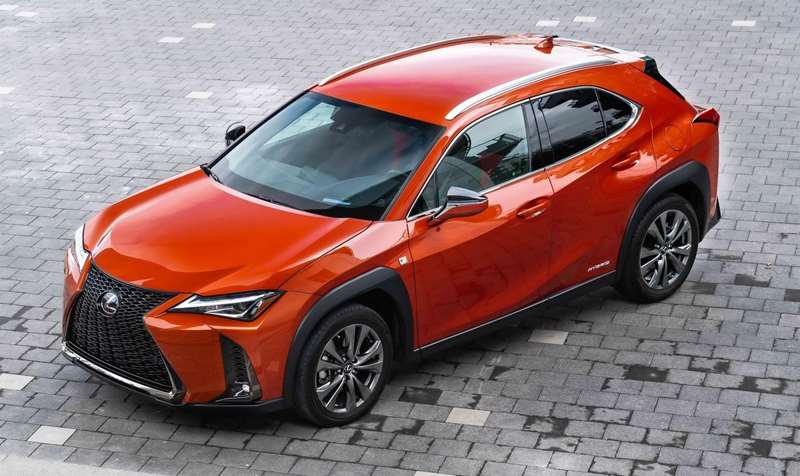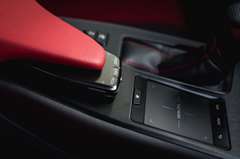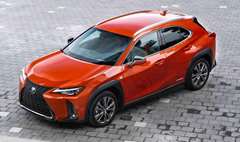Lexus has moved into the compact SUV space with its UX model. Richard Bosselman puts the hybrid version through its paces.
What’s new?
What you see here is the first truly compact crossover from Lexus. Though what may be the brand’s smallest and most affordable SUV yet still carries a premium price tag.
The fourth SUV in the Lexus range, sitting below the mid-sized NX, large RX and RX L and LandCruiser-based LX, it gives Toyota’s luxury arm a competitor for the likes of BMW’s X2, Audi’s Q3 and Mercedes-Benz’s GLA.
The Lexus UX is available with either a pure petrol or hybrid powertrain that are both based on a 2.0-litre petrol and pair with a continuously variable automatic transmission (CVT). Only the hybrid UX250h Limited, as tested, offers all-wheel drive.
Ties between Toyota and Lexus product are generally inevitable, so the UX has relatives across the tracks. You’ll never guess — and the brand certainly won’t go out of its way to remind you — that it and the latest C-HR are, in many ways, sister ships.
Not in the sense of being dead ringers. There’s nothing you can see or touch on any that is common to the other. And the UX, while on the same wheelbase, is longer and taller. Nonetheless, in terms of basic structure, they (and the current Corolla) cross paths; Lexus’ new ‘‘GA-C’’ global architecture is the Toyota New Generation Architecture (TNGA) by another name.
This is no bad thing, yet it’s best not to dwell on what it is that makes even the cheapest UX a lot more expensive than the dearest version of Toyota’s most eponymous model.
There’s MacPherson strut front and trailing wishbone independent rear suspension, passive dampers, plus brake torque vectoring. Lexus claims the UX’s centre of gravity is lowest in class, giving a vaguely sporty driving position in place of a conventional SUV-like ride height.
If the 160mm ground clearance doesn’t leave you thinking twice about taking it into anything more than ‘‘easy’’ off-road situations, then other factors — such as the four-wheel drive being achieved by adding a separate 5.3kWh motor generator in the rear differential — patently ask for consideration about where to take it and when.
What’s it like to look at?
Downright extrovert but perhaps also a touch ‘‘busy’’, it is undeniably edgy and bold, and certainly looks more interesting than a lot of rivals. The flanks feature sharp creases and the rear end has lights that protrude from the body, which aid the aerodynamics and look great, the main displays being connected by a continuous line of light comprising 120 LEDs.
What’s it like inside?
A trim finish inspired by Japanese paper and all the different surface levels, materials and shapes lend an interesting and inviting look and feel.
There are pros and cons. On the positive side, despite it being one of the firm’s cheapest models, the quality of the materials and the standard of assembly are faultless. On the other side of the ledger, this close relationship means it has many of the same ergonomic issues.
Being dimensionally friendly for town also means it will struggle to achieve for family-friendly practicality. By setting the rear seats low, the designers create reasonable headroom in the back, but the driver and front-seat passenger get the best deal. Two adults in the front, two in the rear only works when those in the first row make significant accommodations to release leg space behind.
Lexus has concocted so clever ideas to make best use of the little room available. One example is the cupholders for the back seat being housed in a pull-down divider that transforms the UX into a four-seater. It also conspires to deliver comfort with air vents for the back seat, and twin power outlets, too.
The back opens to reveal a smallish boot space — hampered slightly by its load aperture — with a shallow but long load area. Capacity is officially 327-371 litres when the 60:40 split rear bench is up. The cargo floor is quite shallow. There are bag hooks, a cargo net and a 12V socket.
Back in the cabin proper, you’re swathed in luxury and have lots of kit.
This layout still has an array of small, fiddly buttons that are hard to read or hit at a glance, but, personally, this brand’s continued use of a trackpad-style controller for the screen’s cursor is more of a put-off. A voice control largely deaf to ‘‘New Zild uccents’’ is also annoying.
What comes as standard?
Lexus Safety System Plus is also standard with all-speed adaptive cruise, blind-spot monitor, rear cross-traffic alert and autonomous braking and ability to detect cyclists in daytime and pedestrians even at night.
Comfort and convenience features include a superb 13-speaker Mark Levinson audio system, hands-free boot opening, wireless phone charging, keyless entry/start, a 10.3-inch display with sat-nav (still no Apple/Android phone projection though), heated front seats with 10-way adjustment for the driver (eight for the passenger), dual-zone climate air conditioning and automatic wipers.
For this model, acoustic engineers collaborated with neural scientists to ensure the ‘‘ultimate car-door closure sound’’. The end result is that they listen and adjust each door in a dedicated ‘‘quiet room’’ facility before said car leaves the plant.
What’s it like to drive?
Being tagged a sports utility helps the brand story, as these achieve 70% of Lexus volume, but even with an SUV-ish styling and driving position it’s really more a jacked-up hatchback.
A car of such compact dimensionis destined to work well in town. Factors such as decent visibility and a tight turning radius are instantly beneficial and it is nicely nippy, quiet and composed.
Yet, while the UX is Lexus shorthand for ‘‘urban explorer’’, it drives confidently beyond urban areas, too. A decent test over an assortment of roads within the 100kmh environment was a good experience, though the powertrain does have to work at times.
Ride can get a touch fidgety, yet body control when cornering is particularly good. The only dynamic gripe is the overzealous stability control that kicks in regularly, and without subtlety, but the lane assist is quite good, nudging you back between road lines, and the radar-guided cruise control also worked well.
The steering is especially direct and changes resistance level depending on which of the three driving modes you’re in — Eco, Normal or Sport. This system also tweaks throttle and transmission responses.
All UX hybrid variants use the same all-new thrift-focused 2.0-litre petrol engine as the conventional edition, but battery assist makes for a more refined and engaging around-town experience.
A pure EV mode button has a limited range and cuts out above 40kmh, but it lets you cruise silently around car parks and the like. Even when the UX hybrid reverts to full hybrid drive, it’s so quiet on a light throttle it’s almost like a pure electric.
The setup also gives the twin benefits of being both economical and energetic. The 0-100kmh sprint time is 0.7 seconds faster than the petrol
(8.5sec versus 9.2sec), and combined-cycle fuel economy is claimed to be 4.5L/100km — about 25% more frugal than the orthodox model.
Verdict
While hybrids of the non-plug-in variety are now a little old hat, the 250h is the pick of the new UX range, and it’s no surprise that Lexus expects it to account for 65% of sales. While too tight inside to suit full family consideration, it’s interesting to look at, well-appointed inside, and very capable.
Photos: Supplied












